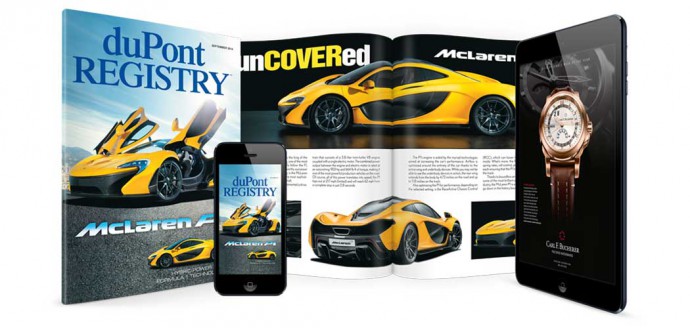A million-dollar, carbon-fiber-bodied McLaren prototype known as the P1 aspires to change the supercar world. If it feels as though you are suffering from déjà vu, you are not alone. We saw this, in the early ‘90s, with� McLaren’s mighty F1. Back then, such companies as Jaguar and Bugatti were vying for supercar supremacy through the title of the world’s fastest production car. With that title currently held by the Bugatti Veyron 16.4 Super Sport, McLaren has the much loftier ambition of becoming the world’s best driver’s car. But it faces stiff competition from Ferrari, which uses that exact same verbiage for the LaFerrari. After all, it is the Ferrari.
Taking the reins where the F1 left off, the P1 utilizes an advanced combination of twin turbochargers and electric motor muscle. It starts with 12C’s 3.8- liter forced induction V-8, an engine designed entirely in-house with dry-sump lubrication and a low-positioned flat-plane crankshaft. The turbochargers are new and run at 20 psi compared to 17 psi in the 12C. With a few other tweaks for cooling and durability, the already amazing output of 616 horsepower has been raised even further, creating an astonishing 727 horsepower at 7,500 rpm. But wait; there’s more. To drive the car directly for up to six miles, it draws on the power of a single electric motor, utilizing its 176 horsepower and 192 foot-pounds of torque to fill in the torque gaps during shifts, to drive the car directly for up to six miles, or for an explosion of power by way of the Instant Power Assist System (IPAS) button.
- The large rear wing adjusts automatically to boost downforce.
- All examples will be produced in left-hand drive.
- Active aerodynamics produce up to 1,323 pounds of downforce, the most of any production car.
The amount of power provided by IPAS really depends on how much electrical energy is left in the battery pack. Located just behind the passenger cabin are six modules, composed of 324 battery cells. Unlike so many hybrids, the P1 does not use kinetic energy from the braking system to recharge the battery. Instead, it captures energy normally wasted as the engine decelerates, say when lifting off the throttle, or it can be recharged directly by the V-8 engine with the press of the Charge button when the car is at a standstill.
At its best, a full 903 horsepower and 664 footpounds of torque is at the driver’s disposal. This power transfers through a seven-speed dual-clutch transmission to the rear wheels, and performance is nothing short of immense: 0-62 mph in less than three seconds, 0-124 in less than seven seconds, and 0- 186 in less than 17 seconds. For comparison, the F1 takes 3.2 seconds, 9.4 seconds, and 22 seconds, respectively, for the same jaunts. The one place the F1 still rules supreme is top speed, where the P1 is limited to 217 miles per hour, the F1 can reach 231
The one place we hope the P1 and F1 really diverge is in the number of units sold. McLaren had hoped to sell 300 F1s until the supercar market took
a plunge, leaving it with just 64 road-going cars before production stopped. McLaren has sold their entire production run of P1s—375 examples.





